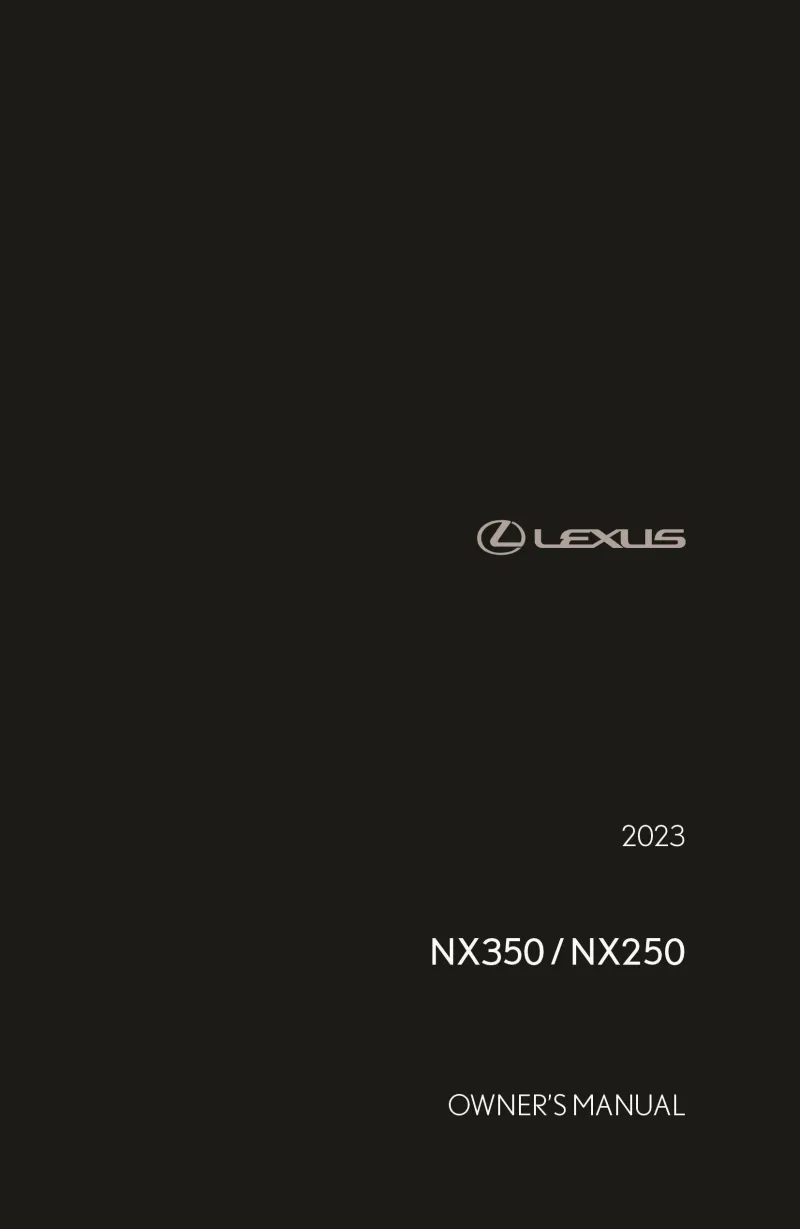2023 Lexus NX 250 350 Owner's Manual

Table of Contents
2023 Lexus NX 250 350 Overview
Introduction
The 2023 Lexus NX 250 and 350 represent a sophisticated blend of luxury, sportiness, and advanced technology. As an emblem of Lexus's commitment to creating uniquely engineered vehicles, the NX models offer a refined ride and an array of features designed to enhance the driving experience. With a bold exterior design that captures attention, the NX stands as a testament to stylish utility in the competitive compact SUV market.
Powertrains
The 2023 NX 250 is powered by a 2.5-liter inline-four engine, delivering a commendable 203 horsepower and featuring an eight-speed automatic transmission that optimizes performance and fuel efficiency. Meanwhile, the NX 350 ups the ante with its robust 2.4-liter turbocharged inline-four engine that produces an impressive 275 horsepower. Both models come standard with front-wheel drive, but all-wheel-drive options are available to tackle diverse driving conditions with confidence.
Trims
The NX trim lineup includes several enticing options, starting with the base NX 250 and NX 350 models. Each trim level can be upgraded further with features that cater to luxury or technology enthusiasts, such as the F SPORT package, which adds performance features and distinctive styling elements. Higher trims provide advanced driver-assistance systems, premium audio systems, and enhanced interior finishes, ensuring there’s an NX model for every preference.
Features
The 2023 Lexus NX is furnished with cutting-edge technology and comfort features. A spacious, elegantly designed cabin provides ample legroom, while a user-friendly infotainment system incorporates a 9.8-inch or available 14-inch touchscreen, Apple CarPlay, and Android Auto compatibility. Safety is paramount, and the Lexus Safety System+ 3.0 includes adaptive cruise control, lane departure warning, and blind-spot monitoring for peace of mind on every drive.
Owner's Manual
The owner’s manual of the 2023 Lexus NX serves as an invaluable resource for new owners. It includes detailed information on vehicle operation, maintenance schedules, and troubleshooting tips. Additionally, the manual covers the advanced technology and safety systems unique to the NX, ensuring that each owner can maximize their driving experience and enjoy every feature their vehicle has to offer.
User manual download
The Lexus NX 250 350 owner manual for the 2023 model year is to be found in PDF downloadable format on this page. The owner manual for the model year 2023 is free and in English, but the repair manuals are usually not easy to get and may cost more.
Manual Questions
Fill the form below and someone will help you!
